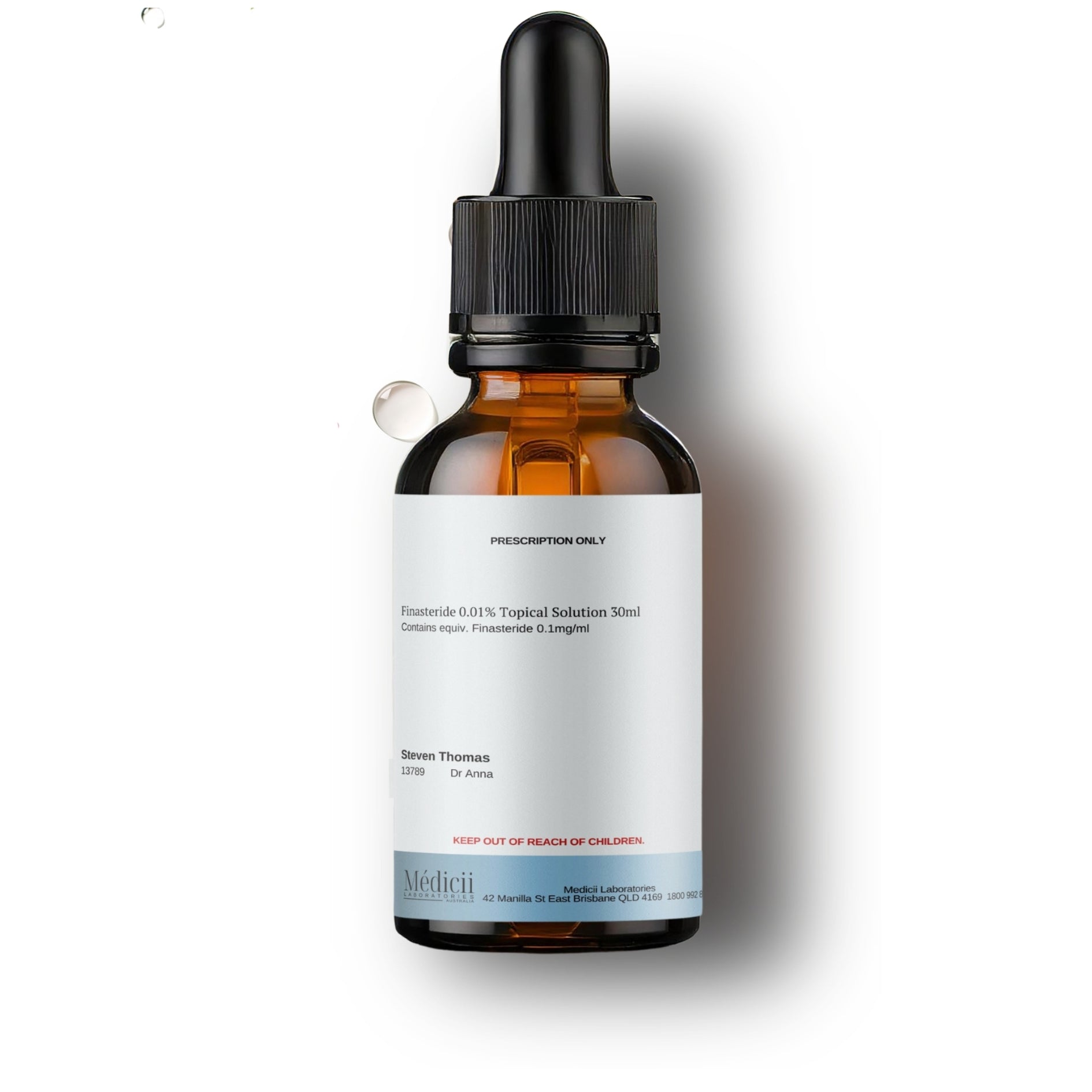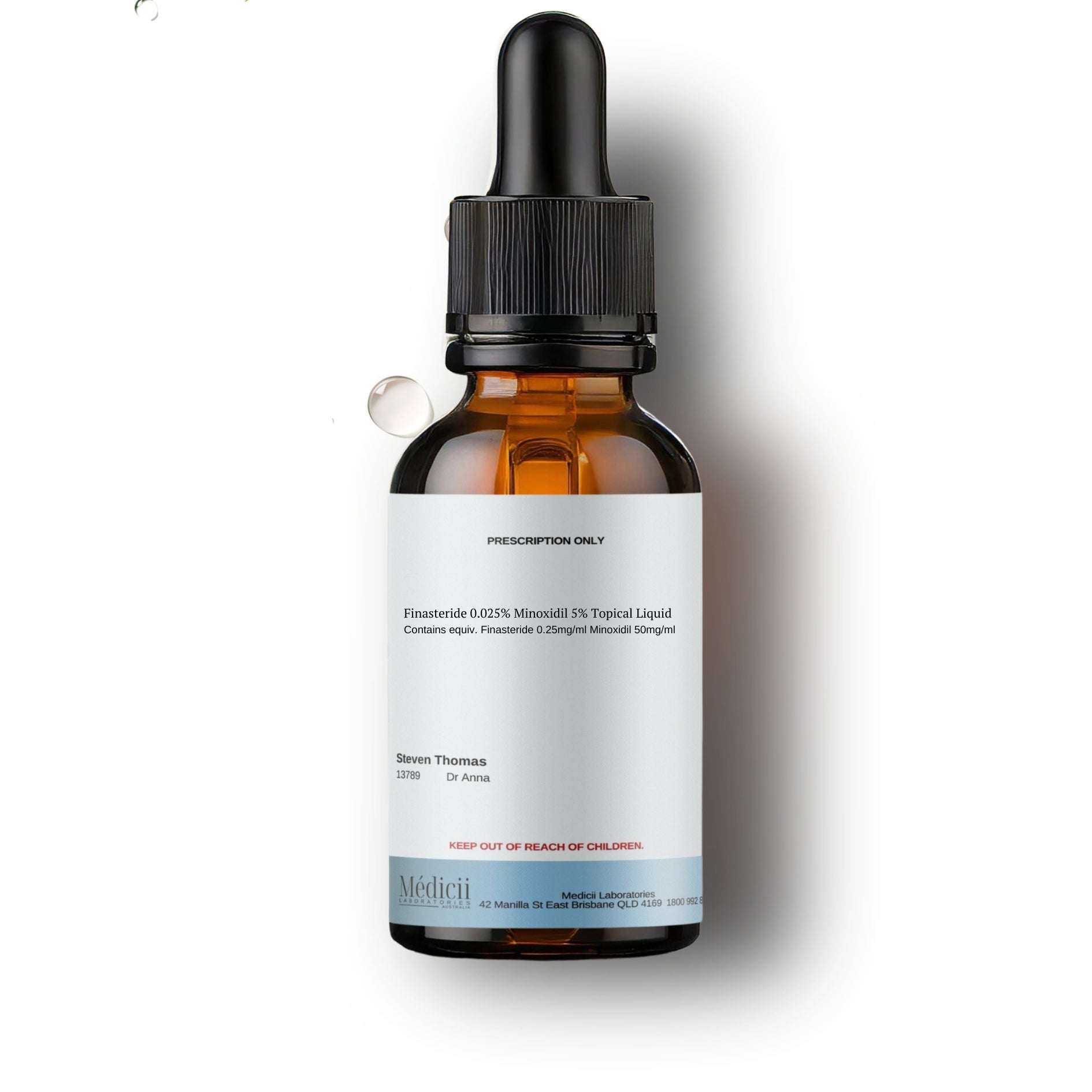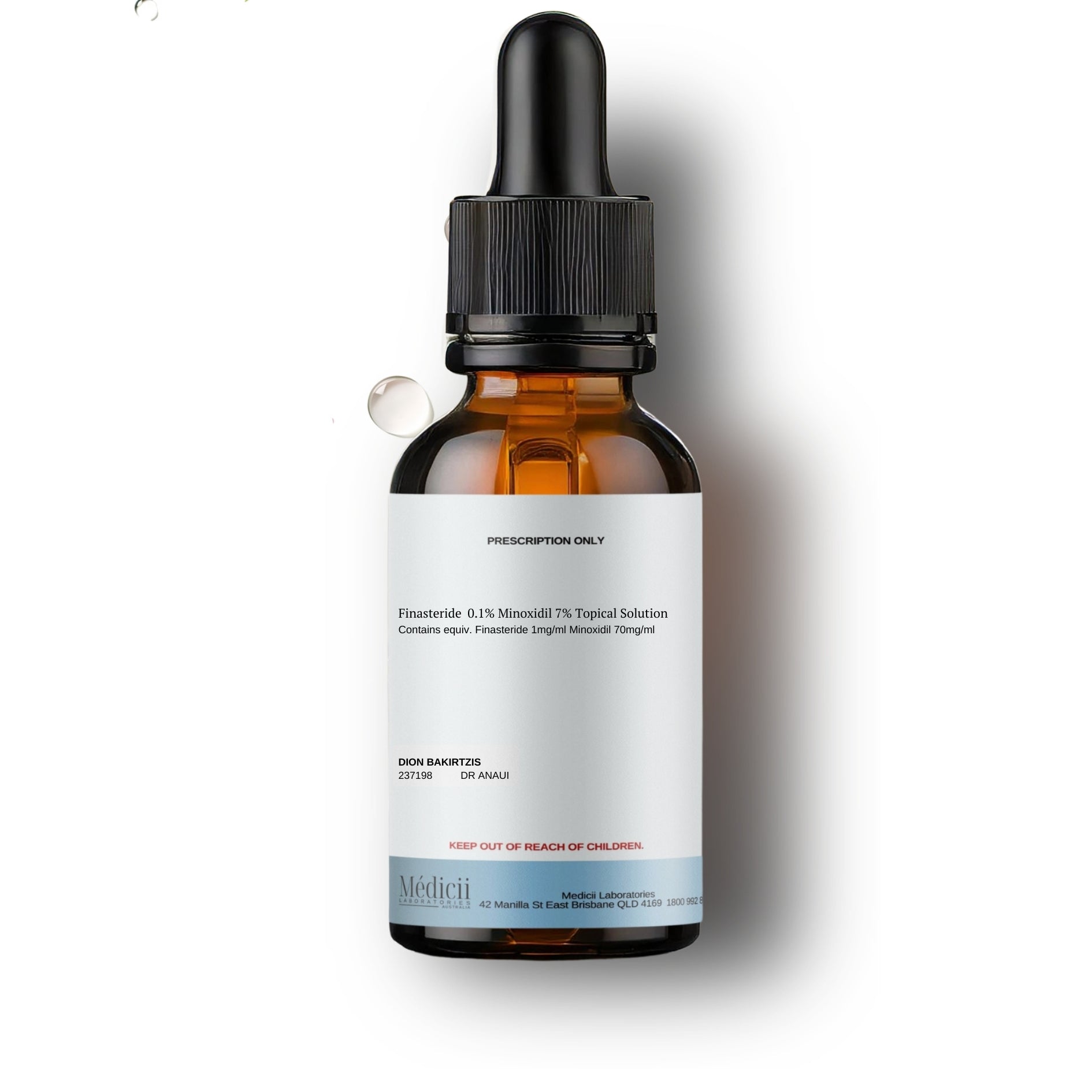Article: Hair Loss - The Cause, Treatment and Side Effects.

Hair Loss - The Cause, Treatment and Side Effects.
There are many forms of hair loss - ranging from Androgenic Alopecia, Alopecia Areata and Telogen Efluvium. This article will focus on androgenic alopecia - the most common form of male pattern baldness.
Androgenic alopecia is multi-factorial with all paths leading to a decrease in blood flow, oxygen supply, miniaturisation of the hair follicle (also known as peach-fuzz) and eventually hair falling out. To fully understand the treatments we have available for hair loss today, we will take a brief overview of:
- What causes hair loss in men
- The most common prescription drug used for the treatment of hair loss in men
- The side effects of Finasteride
- The optimal dose of topical Finasteride
- Other non-drug therapies to help maximise hair gains
What causes hair loss in men?
In androgenic alopecia, hair shedding continues to worsen over time and is not restored if left untreated. Studies show there is a genetic link to hair loss, as well as a reduction in blood flow to scalp tissues and an increase in Dihydrotestosterone (DHT).
Diet and stress can play a role, however, the symptoms are often transient and hair growth resumes when the body returns to homeostasis.
As we age, the activity of 5 alpha reductase (5-AR) is increased. 5 alpha reductase is an enzyme that is responsible for converting testosterone to Dihydrotestostone (DHT). Interestingly, DHT has fives times greater affinity to androgen receptors than testosterone. As a result, hair loss is often seen older men and women, even though the levels of free testosterone is lower.

Finasteride, a prescription drug used for the management of male pattern baldness targets the 5-AR enzyme, inhibiting the conversion of testosterone to DHT. Whilst Finasteride is effective for hair gains, this lead to significant adverse effects for many men because DHT is responsible for many essential metabolic pathways in men.
In embryonic males, DHT is responsible for the development of male reproductive organs and its role continues to be essential as men age.
Can we address DHT levels in the scalp without it affecting serum DHT levels?
The answer is yes, this is possible! New research has found that DHT reducing medicine such as Finasteride can be formulated into a topical solution by a compounding pharmacy.
When applied to the scalp, its action is limited to the scalp area. Although systemic absorption is low with topical applications, care is should be taken to avoid the same nuances seen with oral Finasteride.
What is the optimal concentration of Finasteride Solution?
The optimal concentration of topical finasteride solution will vary between each individual, ranging from Finasteride 0.1mg/ml to Finasteride 0.3mg/ml. We recommend starting low and gradually increasing the dose as required.
It is true that once Finasteride is stopped, hair loss is likely to recur, however; recent studies show that when treatment is combined with weekly derma rolling, the relapse phase is prolonged compared to no derma rolling.
What if I just use something that would increase blood flow to the scalp, will this still work? '
This all depends on the severity of the individual. Studies have shown scalp massages or mechanical stimulation to scalp tissue improves blood flow and can assist with hair growth. If hair loss is predominantly driven by an increase DHT levels, increasing blood flow to the scalp alone may see little results.
Author: Dan Atkinson B Pharm. MPS
References:
1. American Academy of Dermatology. “What is Male Pattern Hair Loss and can it be Treated?” News release Updated December 13, 2022. Last accessed June 5, 2023.
2. Clarke, P (2016). "Male Baldness." Journal of Australian Family Physician. Vol 45, issue 4, April 2016. Accessed June 5, 2023.
3. Lesfour, L et al (2016). "Male Androgenetic Alopecia." National Library of Medicine. Last Up











